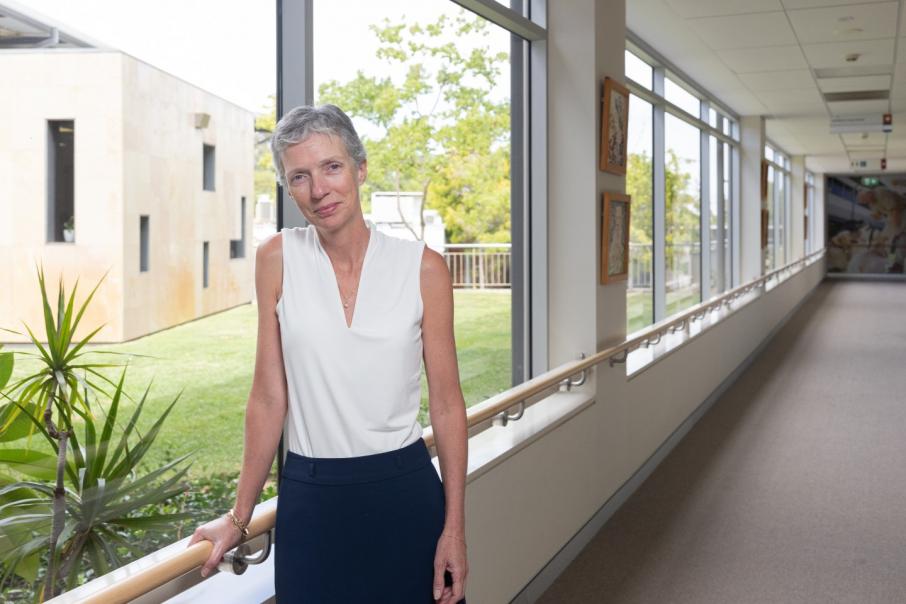A Victoria Park disability service provider was under financial pressure and planned to sell its specifically adapted building to stay viable, until management devised a new plan.


A Victoria Park disability service provider was under financial pressure and planned to sell its specifically adapted building to stay viable, until management devised a new plan.
VisAbility’s Victoria Park premises had been on the market for two years amid the rollout of the NDIS before new chief executive Elizabeth Barnes had a better idea.
With board support, Ms Barnes, who became chief executive in August 2019, moved to turn the building into an inclusive community centre.
Formerly called The Association for the Blind, VisAbility plans to launch the facility, to be renamed the Perron Community Centre, within the next two months.
The facility will be made available to a broad demographic by offering activities such as table tennis, cooking classes and language lessons, and renting rooms for conferences and professional development sessions.
Originally an occupational therapist and former chief executive of not for profits including 360 Health + Community and Directions Disability Support Services, Ms Barnes said the facility was the pinnacle of everything she had ever tried to fundraise for in her career.
“Everything you need is here to run the most brilliant, inclusive service for people with disability,” she said.
“I just thought, ‘Why would you sell this?’”
The Perron Centre, named in 2010 in recognition of five decades of support from the Perron family, is located near the Victoria Park train station.
The building is adapted for people with vision impairments and has facilities including a gym, commercial kitchen, a kiln and a theatrette.
“It’s got loads of light, you can see with all of the windows, the corridors are nice and wide, everything is built specifically to make sure people can access everything they want to access,” Ms Barnes said.
“The challenge was to ensure we could stay, which was an expensive thing; it’s a beautiful building and it’s a very expensive building.”
According to Ms Barnes, running the building costs $500,000 a year with depreciation also around that figure.
With operating a community centre not something Ms Barnes or the board had done before, they asked other centres around Perth for advice.
“They helped us prepare a business case, using all of the costings and the way that they ran their community centre,” Ms Barnes said.
“We developed a business case that projected we would be covering costs in three years, and that was pretty conservative.”
Enquiries by VisAbility found other centres in the area were struggling to meet demand, indicating there was a need for more community spaces.
“We have talked to the Town of Victoria Park and other local community centre providers and everybody is welcoming it because they are all bursting at the seams,” Ms Barnes said.
VisAbility made sure it secured the expertise needed to run a centre by recruiting two staff members who previously managed the Loftus Community Centre in Leederville.
“We know it’s going to work because we know they can do it,” Ms Barnes said.
Part of the business case also involves renting conference rooms, allowing businesses an opportunity to support people with disabilities and the chance to be exposed to the work VisAbility is doing.
“If they are given a choice of going to a Bankwest building or coming here for their professional development session, a lot of organisations are going to want to come here because they know they are making a difference in people’s lives, at the same time as doing their professional development,” Ms Barnes said.
Pressure
The plan to repurpose the building was put to a VisAbility board facing pressure amid the ongoing rollout of the NDIS in late 2019, but Ms Barnes was confident the business case stacked up. And there was an emotional component to the decision, too.
“I don’t believe anyone really wanted to sell it,” Ms Barnes told Business News.
“Everybody loves this building and it was a really heartbreaking decision to sell it.”
Under the NDIS, VisAbility receives money from individuals for providing services, instead of block funding directly from the government based on how many people have vision impairments.
“There is a significantly reduced amount of money guaranteed to come through the door with the NDIS so we have to build and work on getting that money coming in, possibly through different ways,” Ms Barnes said.
According to VisAbility’s annual report, the organisation had revenue of $17 million in 2019, which would place it as 25th largest charitable organisation on the BNiQ database.
As well as launching the community centre, earlier this month VisAbility launched a children’s therapy service for all children with a disability, not just those who are vision impaired.
“That will bring in children to the building, and the Perron Community Centre will bring people of all ages into the building and add that to our vision impairment, that will give us enough to be a sustainable organisation that can afford a building that is like this,” Ms Barnes said.









